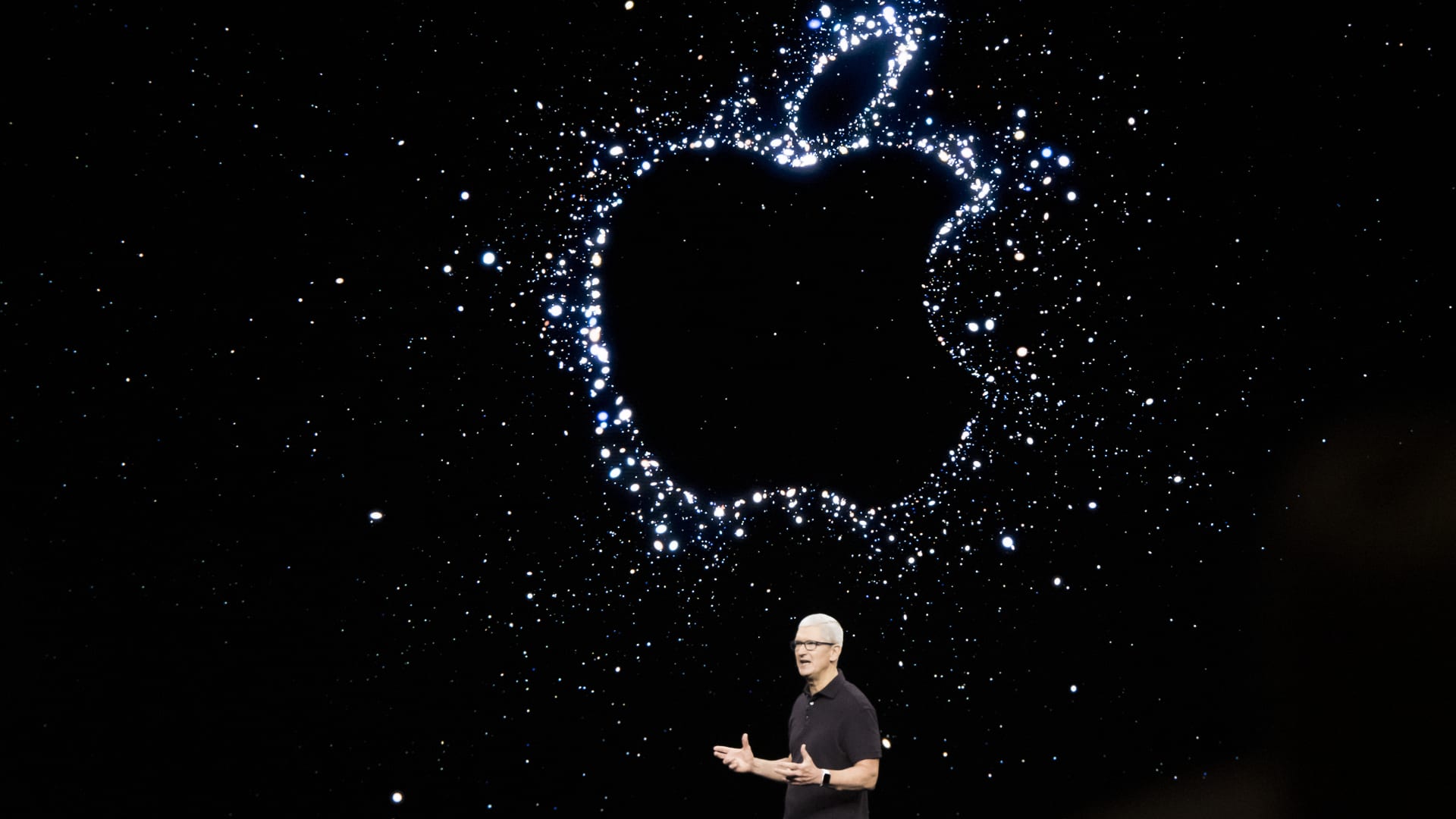Apple CEO Tim Cook speaks at an event at the Apple Park campus in Cupertino, California, on Sept. 7, 2022. At a presentation dubbed Far Out, Apple is set to unveil the iPhone 14 line, a fresh slate of smartwatches and new AirPods.
Nic Coury | Bloomberg | Getty Images
Apple will likely launch an iPad with a folding screen in 2024, analyst firm CCS Insight said on Tuesday, forecasting the U.S. technology giant will begin experimenting with foldable technology soon.
CCS Insight published its annual predictions report on Tuesday in which the group’ analysts make forecasts about future products and trends.
In the latest report, CCS Insight predicted Apple would launch a foldable iPad in two years’ time rather than start with a foldable iPhone.
This is contrary to other smartphone makers like Samsung which have launched foldable smartphones rather than tablets.
“Right now it doesn’t make sense for Apple to make a foldable iPhone. We think they will shun that trend and probably dip a toe in the water with a foldable iPad,” Ben Wood, chief of research at CCS Insight, told CNBC in an interview.
“A folding iPhone will be super high risk for Apple. Firstly, it would have to be incredibly expensive in order to not cannibalize the existing iPhones,” Wood added.
The analyst said that a foldable iPhone would likely need to cost around $2,500. Apple’s iPhone 14 Pro Max with the largest storage, which is the most expensive model currently, costs around $1,599.
Wood also said that if Apple had any technical issues with the foldable phone, then it would be a “feeding frenzy” with critics attacking Apple for the problems.
Still, Apple has “no option but to react because the trend toward foldables is gathering momentum,” Wood said, hence the company will begin with an iPad.
He said it would give Apple a chance to learn how to implement and scale foldable screen technology as well as “breathe new life” into the iPad range.
Apple was not immediately available for comment when contacted by CNBC.
There have been a number of rumblings about Apple’s intentions with foldable screen products. Earlier this year, market research firm Display Supply Chain Consultants said Apple is unlikely to enter the foldable smartphone market until 2025 at the earliest. However, the company said that Apple is exploring foldable technology for displays of around 20 inches in size. That could be focused on a new foldable notebook product, the market research company said.
Predictions about a foldable iPhone meanwhile have been around for at least four years. Last year, Ming-Chi Kuo of TF International Securities, a prominent Apple analyst known for his credible predictions, said the company could release an iPhone with a folding screen in 2024.
Apple to combine 5G and processor in chip
CCS Insight also predicts that Apple will continue investing in its own chip design.
Currently, the Cupertino giant designs its own custom chips for iPhone and iPad. It relies on U.S. chipmaker Qualcomm for modems that allow these devices to connect to mobile internet networks for 5G connectivity.
However, CCS Insight said that Apple is likely to integrate its own 5G modem into the A series of processor for a “single-chip” solution for iPhones in 2025.
Apple acquired Intel’s modem business in 2019. That led to speculation that the tech giant would very quickly ditch Qualcomm and use its own modems in its devices. However, that hasn’t happened yet.
Kuo of TF International Securities said in June he expects the company to continue to use Qualcomm chips for iPhones released in 2023.
Wood said that Apple has been “ramping up in-house capabilities” so it can use its own modems in iPhones.
“They (Apple) have been shooting for this target for years. They acquired the assets from Intel of the modem unit, they have been working hard to ramp that up, they are very keen to make sure they keep growing their control points they have,” Wood said.
“They don’t want to have to keep paying a third party supplier for their technology.”

